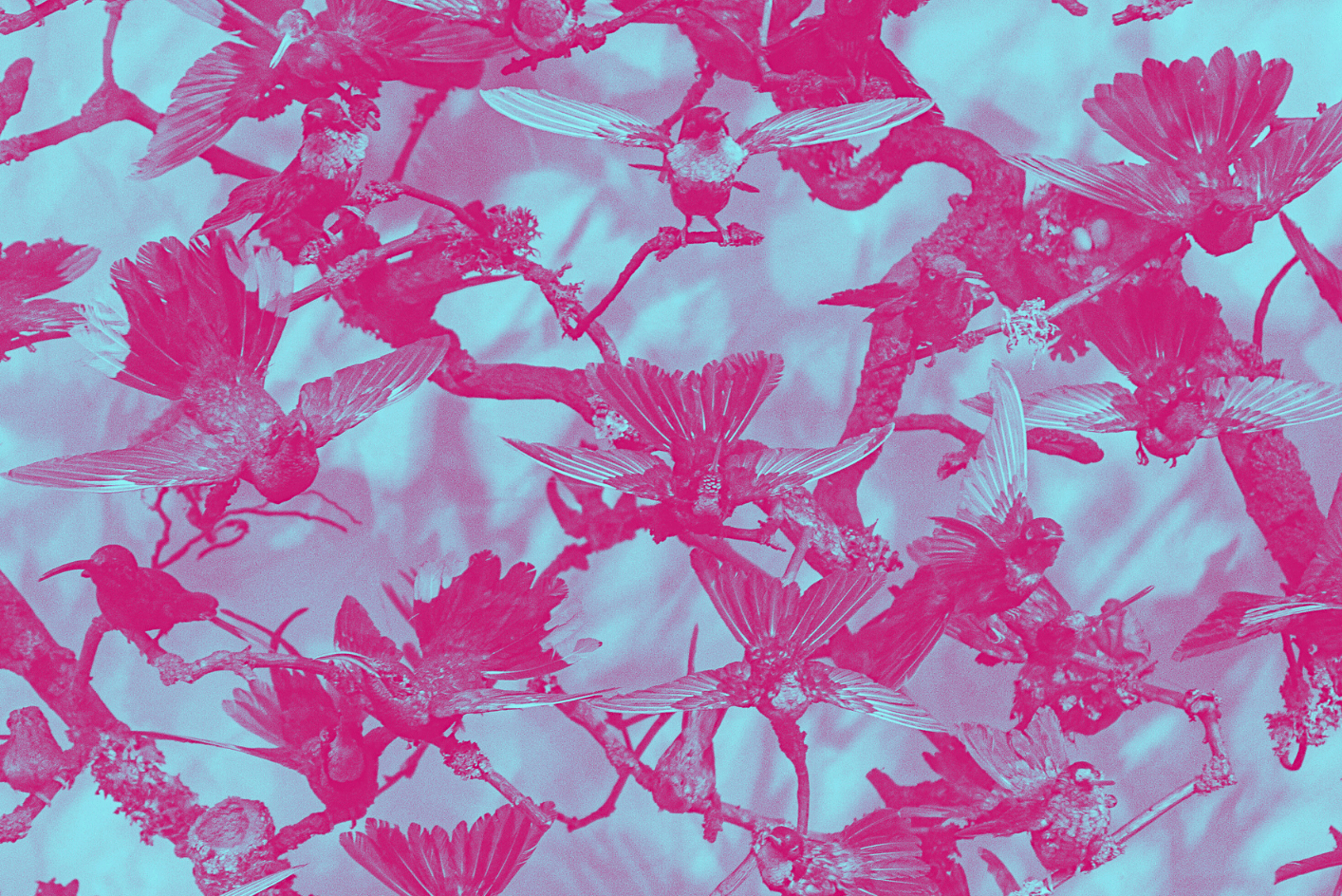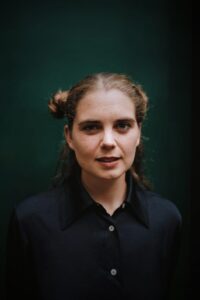RESURRECT.ME 2.0: Invoking the Dead, or on a Thousand (Tiny) Extinctions

Marietta Radomska
Meta.Morf 2024 – [up]Loaded Bodies / Kjøpmannsgata Ung Kunst / Conference April 20 / Curator: Zane Cerpina
RESURRECT.ME 2.0: Invoking the Dead, or on a Thousand (Tiny) Extinctions
What does resurrection mean in the digital era and beyond religious associations or sentimentality? The virtual and the physical are more entangled than they may seem, blurring the boundaries between the living and the non-living, or further: the dead. The environmental cost of generative AI might be one example. But digital worlds also play a special role in the context of the question of death as such. Around 20 years into the existence of Myspace, Facebook, and other social media platforms, these spaces have been populated by profiles of people long gone. On the other hand, digitalized venues of remembrance multiply: from digital ‘tombstones’ in China, through various memorial websites (commemorating humans and their nonhuman companions alike), to digital transformation of photography in the practices of remembering, like in the case of “New Dimensions of Testimony” by the Shoah Foundation, which enables interaction with holograms of Holocaust survivors. Yet, human (mass) death is not the only one that ‘materializes’ digitally. The Anthropocene necropolitics is being fleshed out in many ways: the sixth mass species extinction, extractivist capitalism- and war-induced ecocide, pollution, toxicity, and slaughter for the sake of slaughter. The more-than-human worlds are dying. While finding new ways of staying with and caring for ‘terminally ill’ environments – to paraphrase queer-ecocritical scholar Sarah Ensor – is a must, there is also a need for cultural and affective ways of working with the actual or potential loss, for communities to partake in. This is where the digital meets the physical, once again. Following this intuition, the present talk will zoom in on new-media artworks, design projects, or digital sound archives that venture into the living/non-living interface by bringing back to ‘life’ – even if for a brief moment – that which in one way or another has been marked as ‘extinct.’ Some of the examples include: Tanja Vujinovic’s “Carboflora,” a virtual environment populated by the plants of the Carboniferous period; C-Lab’s “The Living Dead: On the Trail of a Female,” which uses a drone with a multispectral camera to search for a potential last remaining female specimen of the “Encephalartos woodii” cycad – a plant species that does not exist in the wild; or Alexandra Daisy Ginsberg’s “The Substitute,” dealing with the extinction of the northern white rhinoceros. What do such projects tell us about practices of remembrance? How are they linked to the de-extinction movement? What do they tell us about our relation to that (more-than-human) which is gone? And perhaps, even more importantly, to that (more-than-human) which is not gone yet? Where does the boundary between the living and non-living run – if there is still one? Who is at the center of digitalized resurrections? These are some of the questions this talk aims to tackle.
 Marietta Radomska (PL/SE), PhD, is an Assistant Professor of Environmental Humanities at Department of Thematic Studies, Linköping University, SE; founding director of research platform The Eco- and Bioart Lab (https://ecobioartlab.net/); co-founder of Queer Death Studies Network (https://queerdeathstudies.net/); and member of Bioart Society (https://bioartsociety.fi/). She works at the intersection of environmental humanities, continental philosophy, feminist theory, queer death studies, visual culture, contemporary art, and artistic research. In the years 2017-2022, she led two research projects on ecologies of death, environmental violence, and contemporary art (funded by Vetenskapsrådet, FORMAS, and MISTRA), and since 2022 has been the PI of the research project “Ecological Grief, Crisis Imaginaries and Resilience in Nordic Lights” (2022-26), funded by FORMAS. Radomska is the author of “Uncontainable Life: A Biophilosophy of Bioart” (2016); co-editor of the book series “Focus on More-than-human Humanities” at Routledge (with C. Åsberg); co-editor of books: “State of the Art – Elements for Critical Thinking and Doing” (2023; with E. Berger, M. Kesi-Korsu and L. Thastum) and “Routledge Handbook of Queer Death Studies” (forthcoming 2025, with N. Lykke and T. Mehrabi); and has published in “Australian Feminist Studies; Somatechnics; Women, Gender & Research, Artnodes, Environment and Planning E, Research in Arts and Education,” among others. Personal web:
Marietta Radomska (PL/SE), PhD, is an Assistant Professor of Environmental Humanities at Department of Thematic Studies, Linköping University, SE; founding director of research platform The Eco- and Bioart Lab (https://ecobioartlab.net/); co-founder of Queer Death Studies Network (https://queerdeathstudies.net/); and member of Bioart Society (https://bioartsociety.fi/). She works at the intersection of environmental humanities, continental philosophy, feminist theory, queer death studies, visual culture, contemporary art, and artistic research. In the years 2017-2022, she led two research projects on ecologies of death, environmental violence, and contemporary art (funded by Vetenskapsrådet, FORMAS, and MISTRA), and since 2022 has been the PI of the research project “Ecological Grief, Crisis Imaginaries and Resilience in Nordic Lights” (2022-26), funded by FORMAS. Radomska is the author of “Uncontainable Life: A Biophilosophy of Bioart” (2016); co-editor of the book series “Focus on More-than-human Humanities” at Routledge (with C. Åsberg); co-editor of books: “State of the Art – Elements for Critical Thinking and Doing” (2023; with E. Berger, M. Kesi-Korsu and L. Thastum) and “Routledge Handbook of Queer Death Studies” (forthcoming 2025, with N. Lykke and T. Mehrabi); and has published in “Australian Feminist Studies; Somatechnics; Women, Gender & Research, Artnodes, Environment and Planning E, Research in Arts and Education,” among others. Personal web:
https://mariettaradomska.com/ | https://ecobioartlab.net/ | https://queerdeathstudies.net/
Header Graphics: “Humming”-detail, courtesy of the artist. Portrait photo courtesy of the artist.

 Marnix de Nijs (NL) b. 1970, is a Rotterdam-based installation artist. After graduating as a sculptor in 1992, he focused his early career on sculpture, public space, and architecture. Since the mid 90’s, he has been a pioneer in researching the experimental use of media and technologies in Art. His works include mainly interactively experienced machines that play with the perception and control of image and sound, but also radical and humorous pieces such as his Bullet Proof Tent and the Physiognomic Scrutinizer belong to his oeuvre.
Marnix de Nijs (NL) b. 1970, is a Rotterdam-based installation artist. After graduating as a sculptor in 1992, he focused his early career on sculpture, public space, and architecture. Since the mid 90’s, he has been a pioneer in researching the experimental use of media and technologies in Art. His works include mainly interactively experienced machines that play with the perception and control of image and sound, but also radical and humorous pieces such as his Bullet Proof Tent and the Physiognomic Scrutinizer belong to his oeuvre.
 Martinus Suijkerbuijk’s (NL/NO) diverse background forms the blueprint of his artistic practice. He holds a degree in Automation Engineering and Industrial Design. In 2017, he graduated from the International MFA program at the Trondheim Academy of Fine Arts, where he is also currently a PhD candidate. His work is best understood as an experimental practice that connects, translates, and operates across the borders of different media, artistic genres, and disciplines. Within his practice, he explores the fringes of art, technology, and philosophy through the potential of alliances and collaborations. His technical background has enabled him to work across industries. He has been invited to present his research and work at art institutions (ZKM, Sónar+D Barcelona, Meta.Morf 2020) as well as technology conferences (CHI 2018, Philips Trend Event). Presently, his artistic research centers around the possibilities of Artificial Aesthetic Agents through AI technologies and gaming engines.
Martinus Suijkerbuijk’s (NL/NO) diverse background forms the blueprint of his artistic practice. He holds a degree in Automation Engineering and Industrial Design. In 2017, he graduated from the International MFA program at the Trondheim Academy of Fine Arts, where he is also currently a PhD candidate. His work is best understood as an experimental practice that connects, translates, and operates across the borders of different media, artistic genres, and disciplines. Within his practice, he explores the fringes of art, technology, and philosophy through the potential of alliances and collaborations. His technical background has enabled him to work across industries. He has been invited to present his research and work at art institutions (ZKM, Sónar+D Barcelona, Meta.Morf 2020) as well as technology conferences (CHI 2018, Philips Trend Event). Presently, his artistic research centers around the possibilities of Artificial Aesthetic Agents through AI technologies and gaming engines.
 Paula Strunden (DE) is a transdisciplinary XR artist with a background in architecture. She studied in Vienna, Paris, and London and worked at Raumlabor Berlin and Herzog & de Meuron Basel. Since 2020, she has been conducting her design-led Ph.D. as part of the Horizon 2020 European research network TACK at the Academy of Fine Arts Vienna. Her work specializes in embodied and multisensory virtuality, exploring the intersection of architecture, spatial computing, and human experience. Her performative XR installations have been exhibited at prestigious venues such as the Royal Academy of Arts London, Nieuwe Instituut Rotterdam, and Eye Filmmuseum Amsterdam, and nominated for the Dutch Film Award “Gouden Calf” in 2020 and 2023. Through her internet platform, www.xr-atlas.org, she advocates for interdisciplinary historiography of virtual technologies and furthers the recognition of female pioneers in the history of VR.
Paula Strunden (DE) is a transdisciplinary XR artist with a background in architecture. She studied in Vienna, Paris, and London and worked at Raumlabor Berlin and Herzog & de Meuron Basel. Since 2020, she has been conducting her design-led Ph.D. as part of the Horizon 2020 European research network TACK at the Academy of Fine Arts Vienna. Her work specializes in embodied and multisensory virtuality, exploring the intersection of architecture, spatial computing, and human experience. Her performative XR installations have been exhibited at prestigious venues such as the Royal Academy of Arts London, Nieuwe Instituut Rotterdam, and Eye Filmmuseum Amsterdam, and nominated for the Dutch Film Award “Gouden Calf” in 2020 and 2023. Through her internet platform, www.xr-atlas.org, she advocates for interdisciplinary historiography of virtual technologies and furthers the recognition of female pioneers in the history of VR.